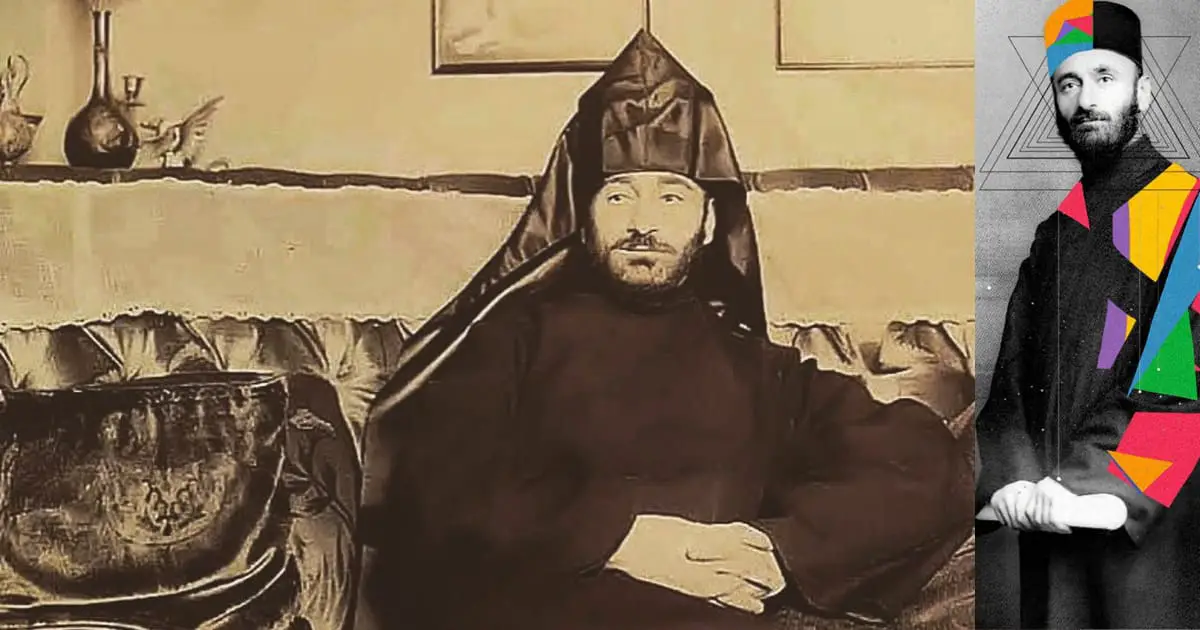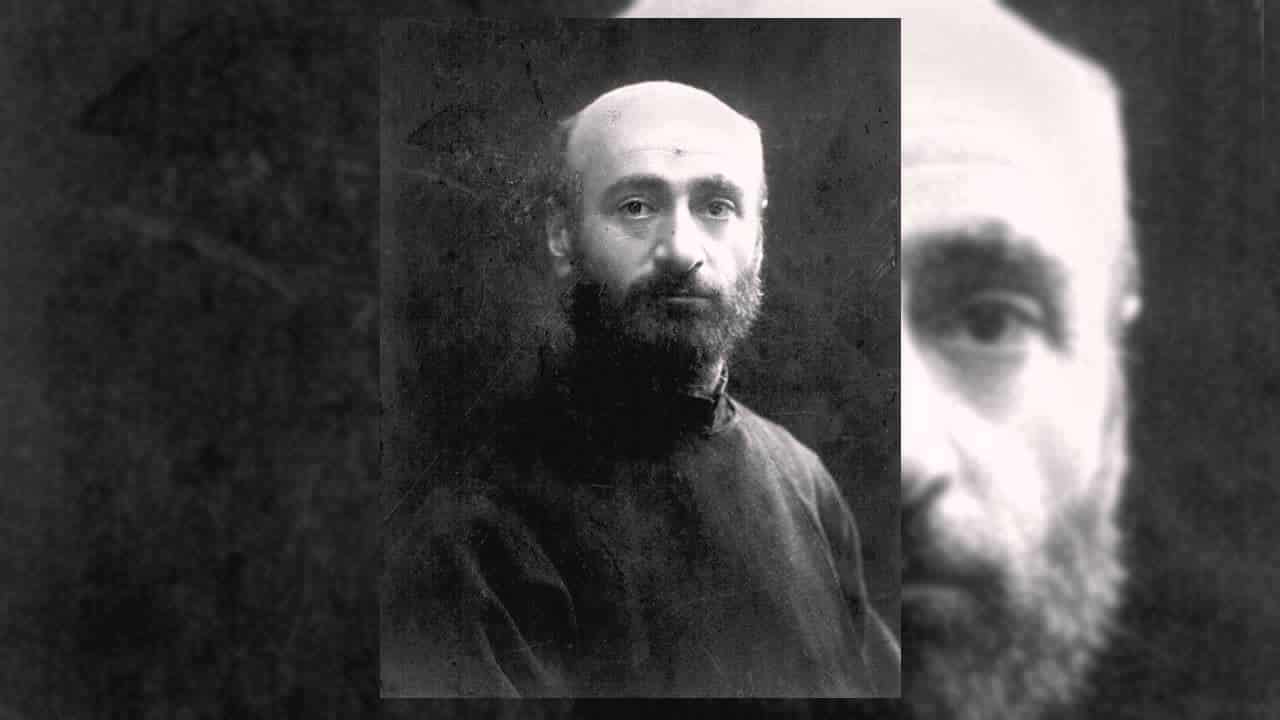September 26 is a special day when a star was born, in a faraway village in Armenia. His real name, Soghomon, and his life were one to celebrate for centuries to come, for the amazing legacy Soghomon left behind. Soghomon became a monk and was renamed Fathe Komitas.
Komitas Vartabed is one of the most famous and loved Armenian priests and composers. He is a symbol of Armenian national pride. After all, we owe to him, preserving our folk songs, and bringing them from the middle ages to modern times.
His story is also connected to each and every one of us, he was one of the early survivors of the Genocide, yet one of the biggest victims. I wonder how many more masterpieces would we have today had he not gone through and witnessed the ottoman atrocities against his own people.
Komitas Vartabed: Soghomon Soghomonian, wiki, bio, education, work
Komitas Vartabed, born Soghomon Soghomonian on 26 September 1869. He lost his parents at an early age and joined the Etchmiadzin’s Gevorgian Seminary to study. He was an ordained celibate priest in 1895.
He studied music at Frederick William University (nowadays aka Humboldt University) in Berlin. He thereafter “used his Western training to build a national tradition”.
(nowadays aka Humboldt University) in Berlin. He thereafter “used his Western training to build a national tradition”.
He is famous for being a musicologist, composer, arranger, singer, and choirmaster. He is considered the founder of the Armenian national school of music; recognized as one of the pioneers of ethnomusicology.
He was behind collecting and transcribing over 3,000 pieces of Armenian folk music, more than half of which were subsequently lost and only around 1,200 are now extant.
Besides Armenian folk songs, he also showed interest in other cultures and in 1904 published the first-ever collection of Kurdish folk songs.
His choir presented Armenian music in many European cities, earning the praise of Claude Debussy, among others.
Komitas settled in Constantinople in 1910 to escape mistreatment by ultra-conservative clergymen at Etchmiadzin and to introduce Armenian folk music to wider audiences.
He was widely embraced by Armenian communities, while Arshag Chobanian called him the “savior of Armenian music”.
His Homecoming
“After years of absence, Komitas returned to Kutahya with glory. He was respected by his fellow countrymen, who had been witnesses to his unfortunate childhood. An orphan who suffered for years, wandering the streets.
He was thrilled to visit his native home. Witnesses say the meeting was so heartbreaking and shocking that those present could not hold back tears.
Komitas greeted his relatives, a cousin, and then entered his hometown and began to silently touch and caress the walls and windows. He then gently pressed the little nail that used to hold a portrait of his beloved mother 15 years ago.
Unable to hold back his tears, he burst and cried loudly.
Komitas vartabed was born in that wooden and half-finished room, and it is where his young poet mother and unfortunate singer father had died.
He was moved to tears as he exited his family home and headed to St. Echmiadzin school where he had been a student for four years.
As he entered the hall, he instinctively headed to the left corner and sat on the ground of a dusty, dirty deck, firmly rejecting the panic-stricken Church board members’ request to sit on a chair …
Sadly, but relentlessly, he replied:
“Years ago no one cared for me when I was sitting right here without a cushion while others were sitting on pairs of cushions. I have been seriously ill here twice. Now let me, voluntarily, sit down and remember my past misfortunes and these dry boards. “
Komitas’ advice to teachers
“Teaching gentlemen and sisters, approach the work of upbringing (teaching) with caution and fear; Yours is a very soft job: You are called to nurture a generation that is the future nation. in the wrong direction, you are ruining a nation in the end.
If a child does not understand your teaching, you are only to blame, because you cannot understand his soul. You have to go down to their mental level and take it with you.”
Memories of the Vartabed
Margaret Babayan, a pupil of Komitas vartabed, a close friend and fan, recalls:
“During a harsh economic time, on his way to their house, while walking on a pavement, Komitas sees a worn grey pouch. “Whose purse could it be? Not a rich man’s for sure.”
He opens and looks at the contents of the purse. Finds a couple of francs and pennies. But he wonders where would he find the poor owner of the purse, that should be looking for it desperately by now.
While in a hurry and worried to make it on time to supper, Komitas stands still looking at the passers-by, hoping to find the owner of the purse.
A few hours pass but no one comes to look for anything they are missing, no one asks if he has seen a purse.
Komitas worries the Babayans are waiting for him to arrive. He is already too late for supper. Awkward situation.
After another hour of tense waiting, Komitas begins to get nervous.
He checks the time again, he has been standing in the street for three hours, and, from a distance, he notices a woman approaching along the sidewalk slowly. The further the woman in plain clothes approaches, he notices that she looks pale and anxious.
Komitas asks immediately: “What are you looking for, lady?”
“Holy Father, when I go out for bread, I lost my last centimes. At home, my hungry kids are waiting for me.”
There are tears in the woman’s blue, sore eyes.
– Can you tell what color your lost wallet was?
– Gray, it was a worn purse.
He smiles contentedly, pulls out the purse, hands it over to the lady, wishes her good luck, and rushes to the Babayan’s apartment. For the first time in his life, he wasn’t on time.” (Stepan Kourtikyan’s book Komitasian Bells, 1969.)
Komitas, the Armenian Genocide, and his death
In April 1915 Komitas is treated in the same manner, by the Ottoman Government, as hundreds of other Armenian intellectuals who were arrested and deported to prison camps.
“He was soon released under unclear circumstances and experienced a mental breakdown and developed a severe case of posttraumatic stress disorder (PTSD).
The widespread hostile environment in Constantinople and reports of mass-scale Armenian death marches and massacres that reached him further worsened his fragile mental state.
He was first placed in a Turkish military-operated hospital until 1919 and then transferred to a psychiatric hospital in Paris, where he spent the last years of his life in agony.

Gomidas Vartabed 150th Anniversary Celebration (Cyprus)



